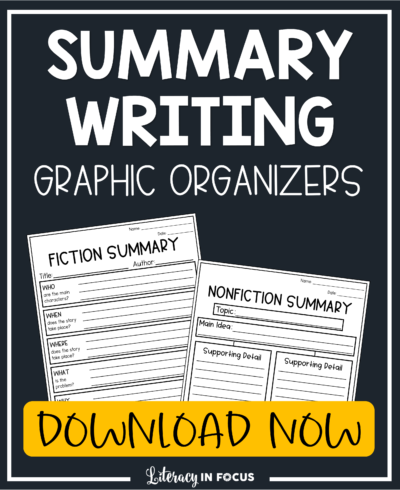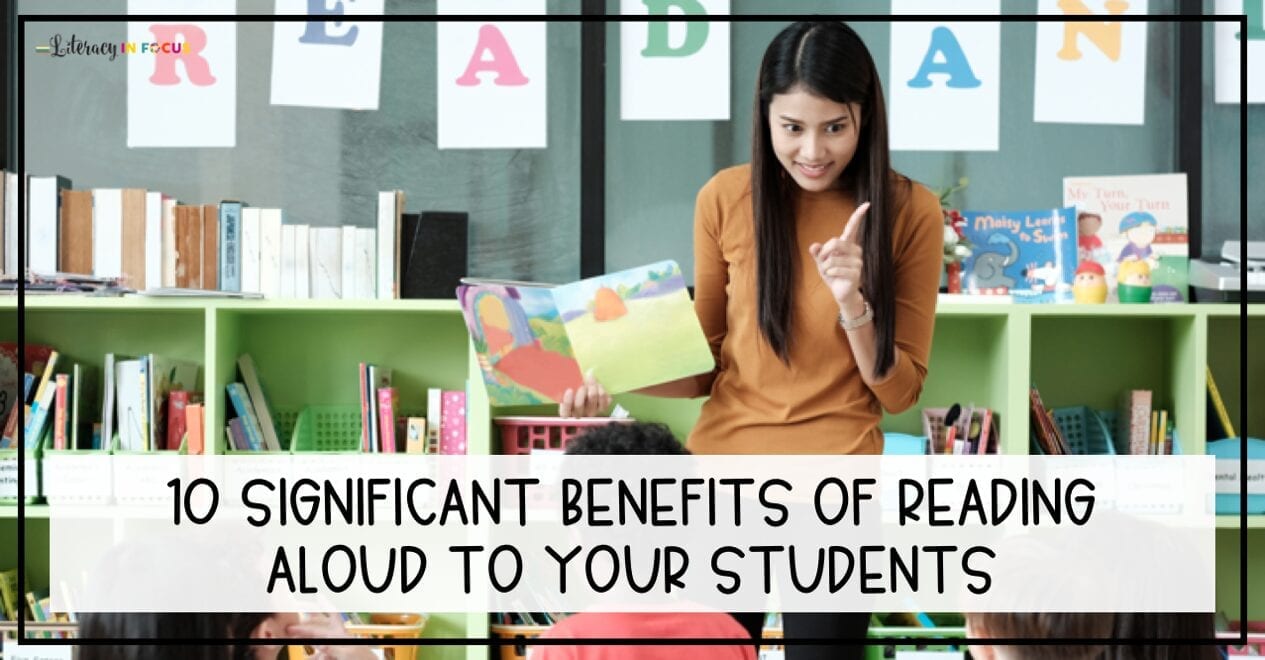
The practice of reading out loud to students has a myriad of benefits, some you may be aware of and others that might surprise you. Regularly scheduled classroom read alouds benefit students of all ages and grade levels. Whether you read for five minutes or half an hour, your students are benefitting! If you’re at all on the fence about making reading alouds a regular classroom occurrence, or if you want compelling reasons to support your decision to incorporate daily read alouds, ten important benefits are listed below.
Foundational Literacy
Reading aloud is the foundation for literacy development. Before children can read every word on the page, they are able to listen to the individual phonemes that make up each word. As a result, they are building the necessary foundations for literacy. The importance of reading aloud to children was demonstrated in a two-year study completed by the US Department of Education. Results of the study indicated that the single most important activity for building the knowledge required for eventual success in reading is reading aloud to children. The study also suggested that reading aloud is a practice that should continue as the student progresses through the grade levels.
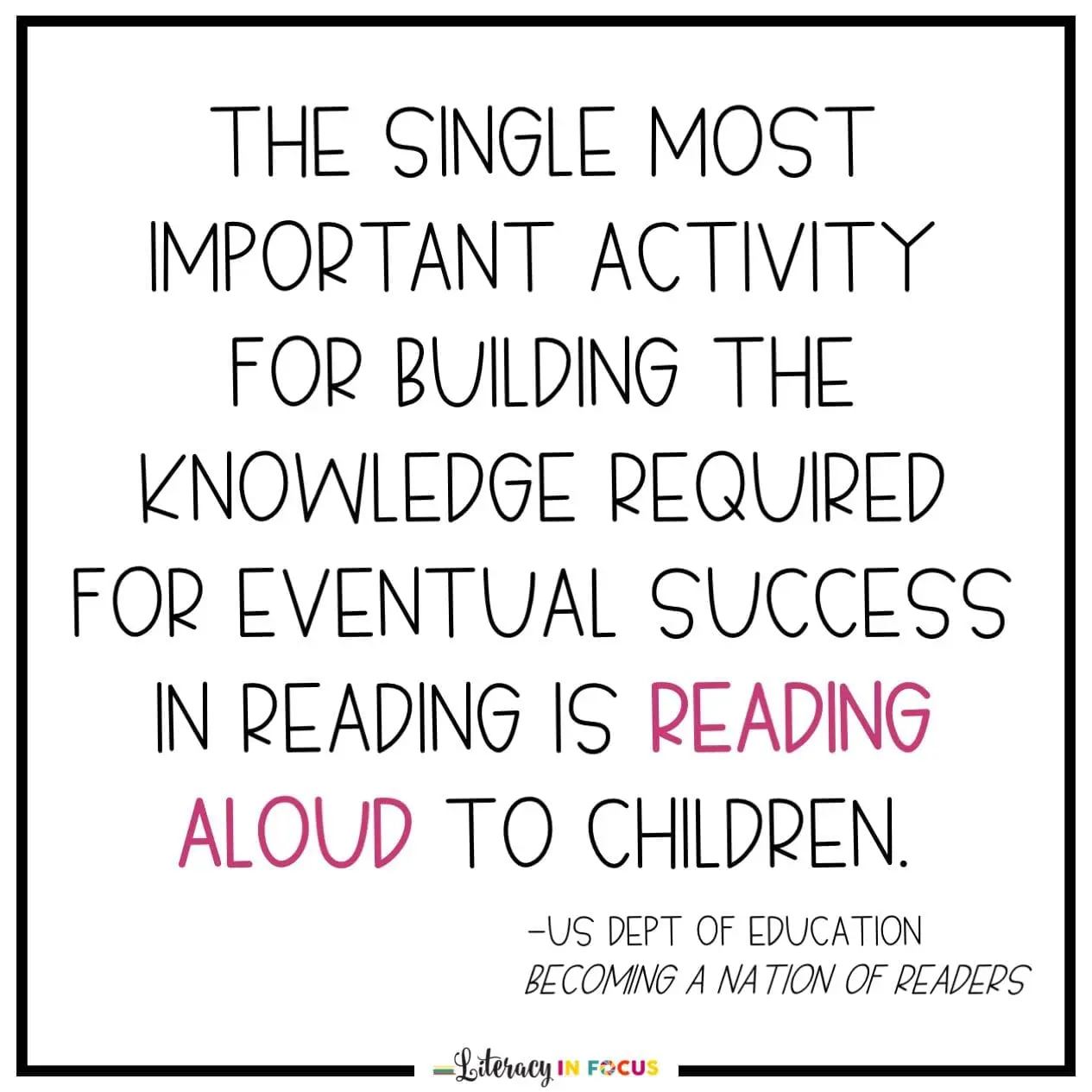
Listening Skills
Hearing a text read out loud gives students the opportunity to improve their listening skills. The regular practice of active listening requires patience and attention, two skills that are necessary for becoming strong independent readers. Listening to a text will also give students a chance to develop sustained concentration, which may lead to deeper thinking and reflection.
Reading as Enjoyment
It’s important for students to see that reading can be a fun and exciting experience. The last thing we want is for our students to think of reading as a chore, which makes the books you choose for your read alouds extremely important. Pick something of high interest to your students or something that connects with a topic of study. Relevance is the key to success when it comes to generating interest and promoting the positive aspects of reading.
Classroom Community
Reading aloud provides students with a shared context from which lively classroom discussions can develop. Encouraging conversations about the reading will enhance inclusivity and give students a chance to build communication skills. As with any developing skill, you can scaffold learning by providing your students with conversation starters or sentence frames to get the ball rolling. Ideally, the extra practice with collaboration will spill over into other areas of study.
Expression and Inflection
Reading aloud makes the invisible act of reading visible. Modeling fluency, expression, and tone will provide your students with a framework for improving their reading skills. Listening to nuances in expression and inflection will demonstrate to students that there is more to reading than just the printed words on the page. According to Social Learning Theory, developed by psychologist Albert Bandura, observing others plays a vital role in how we acquire new knowledge and skills. Modeling the reading process will allow students to experience the intricacies of reading that they might not otherwise observe.
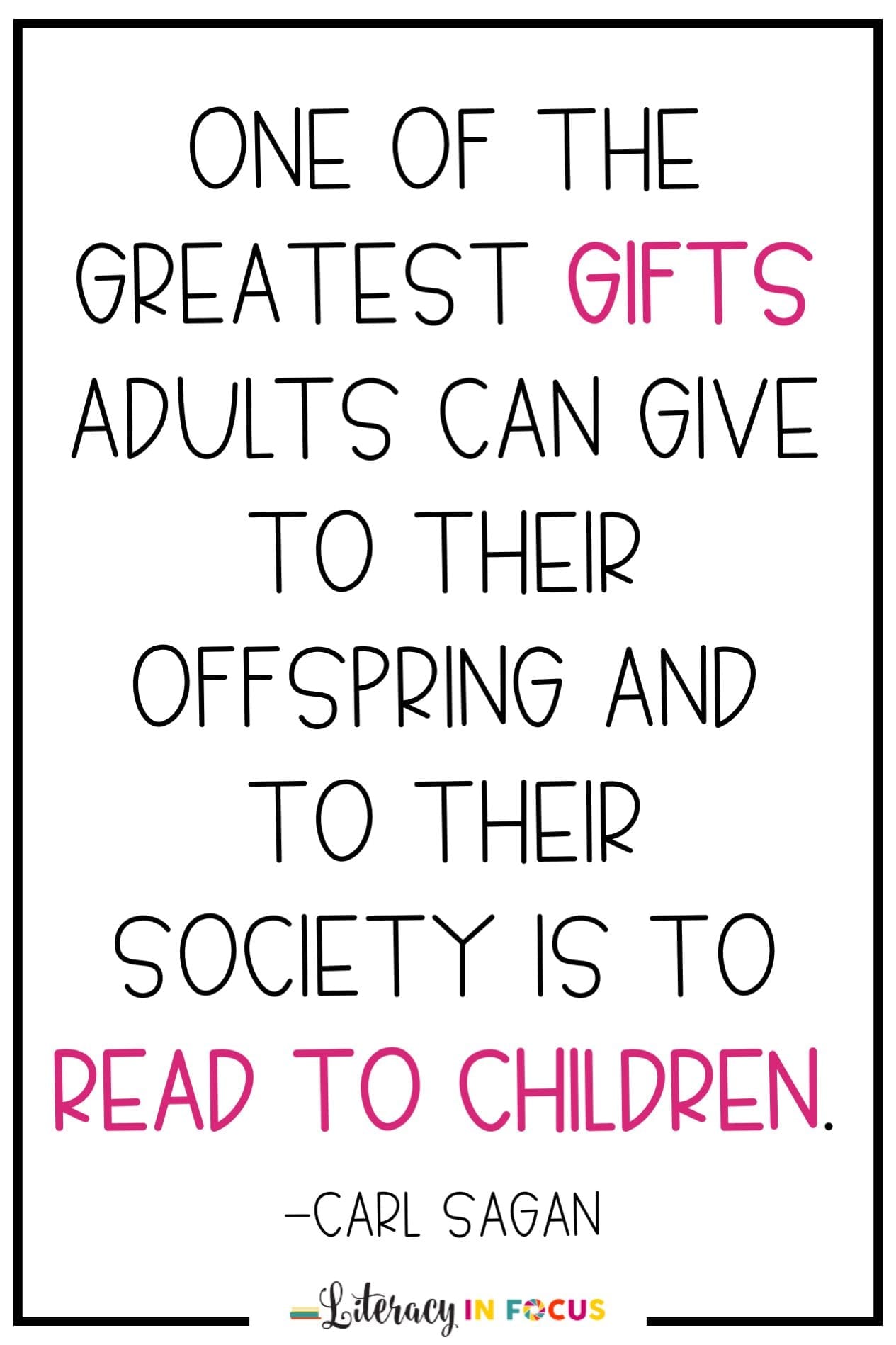
Vocabulary
One of the first steps in acquiring language is hearing new words in context. Reading aloud to students has the potential to broaden individual student vocabularies, which can lead to more accurate forms of written and verbal expression. Taking students beyond their current reading levels using read alouds will expose them to words they may not be exposed to when reading independently. This will give students a chance to learn new words in context that they can then incorporate into their background knowledge for use during future reading.
Comprehension
Metacognition is the awareness and understanding of one’s own thought processes, and it’s one of the key components of reading comprehension. When listening to a text being read aloud, students can focus on metacognition without the added stress of grappling with words they don’t understand. Additionally, students can construct meaning, connect ideas, apply background knowledge, and discover new words in a low stakes environment.
Assessment
Read alouds can be used as a tool for formative assessments. Perform comprehension quick checks by posing text-based questions during and after the readings. Formulating questions that require critical thinking about the text will give you valuable insights into the abilities of your students. Four example questions are listed below.
- What do you think will happen after _______?
- What can you infer from ________?
- Why do you think the author included ________?
- What clues help you understand the meaning of the word _______?
Visualization
Listening to a story or article being read out loud will allow students to practice visualization, using prior knowledge and background experiences to connect the author’s writing to a personal picture. Mental imagery will help students understand, remember, and take away meaning from the text. You can encourage visualization by having students draw pictures as they listen to the text being read aloud. The goal is for students to use visualization techniques when reading independently.
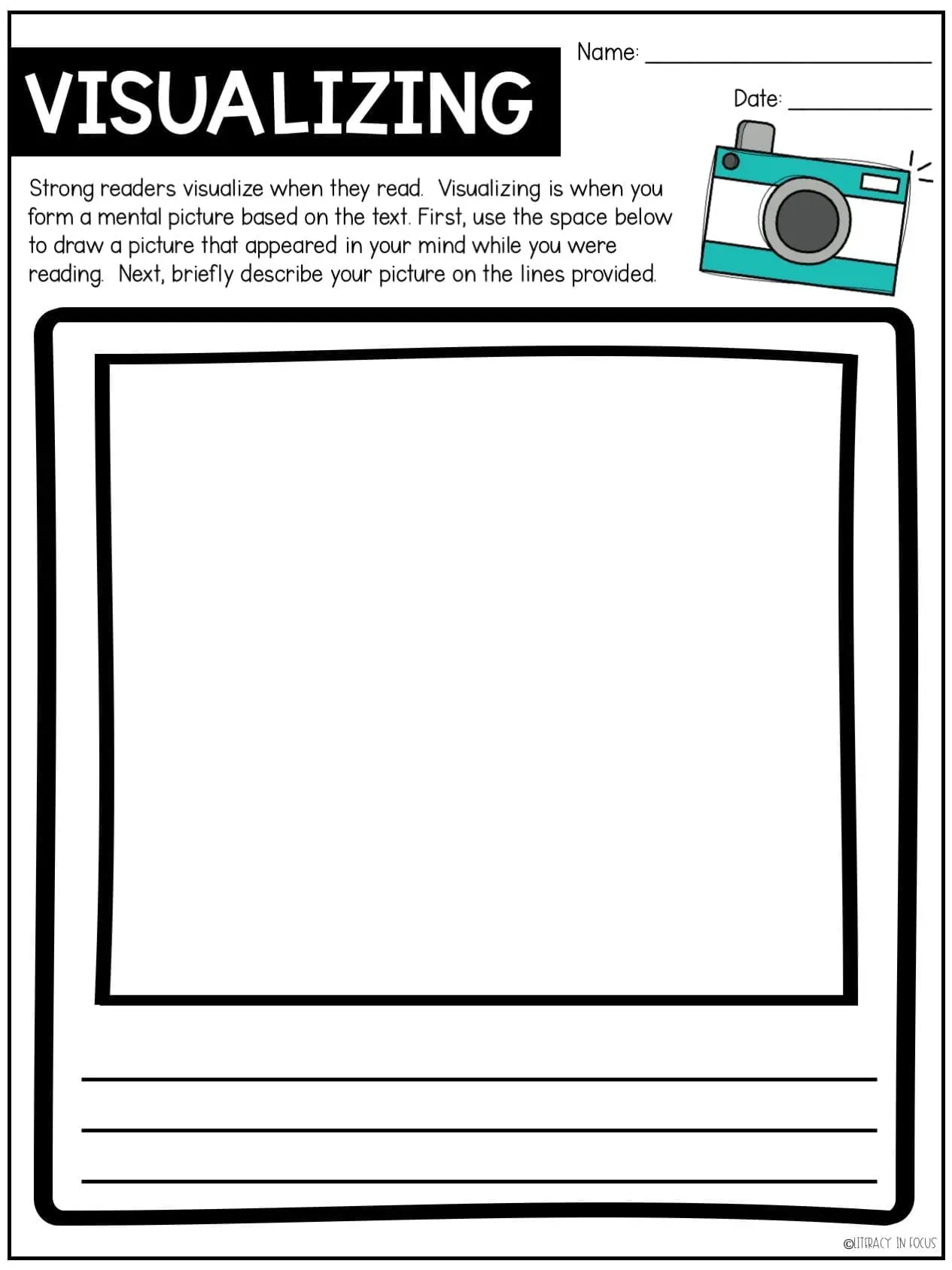
Background Knowledge
Background knowledge is essential for reading comprehension. Regularly reading aloud to your students will increase their knowledge on a variety of topics, allowing them to tap into new information they can pull from when reading independently. Also, delivering new information within the context of a story or article will aid in comprehension, making it easier for students to infer meaning when necessary.
Technology has made it possible for many different types of read alouds to occur in the classroom. Audiobooks, YouTube videos, and podcasts are examples of the different ways a read aloud in your classroom might take shape. Additionally, read alouds don’t always have to be storybooks or picture books. I read chapter books (without pictures- gasp!) to my seventh graders every day after lunch, and they loved it!
Visualizing Worksheet


